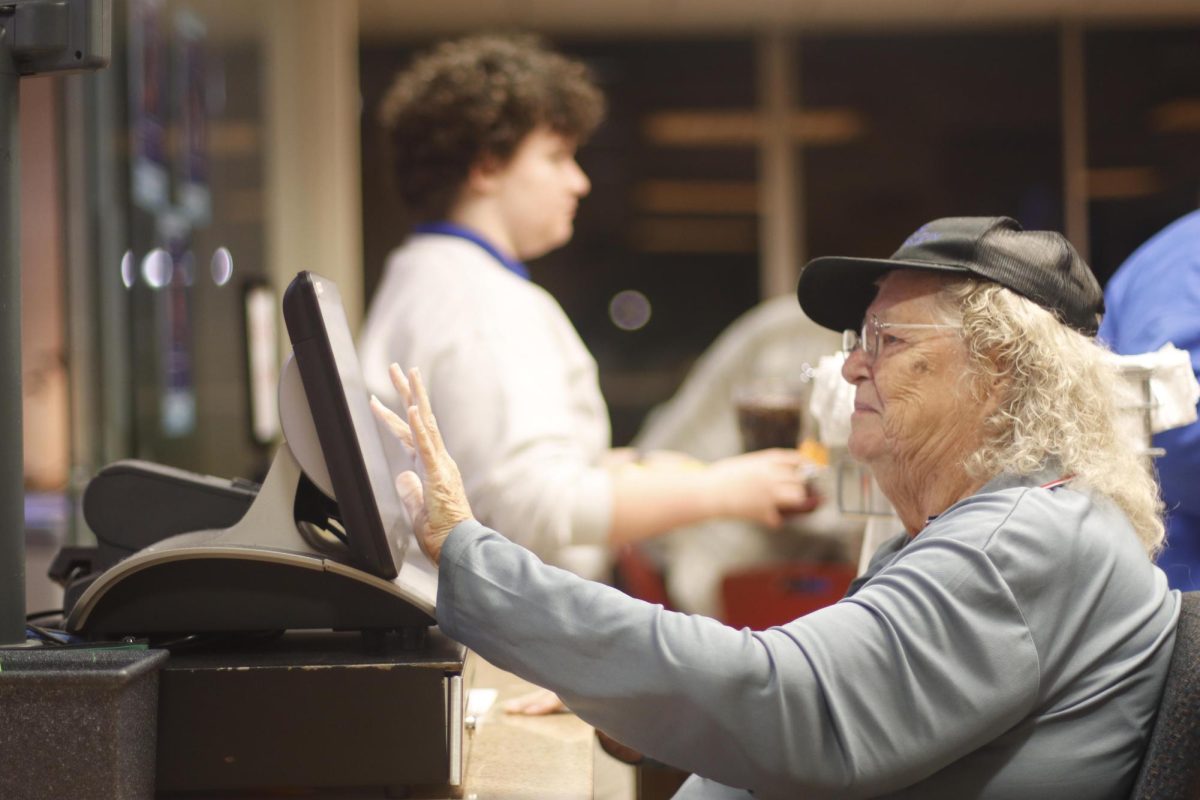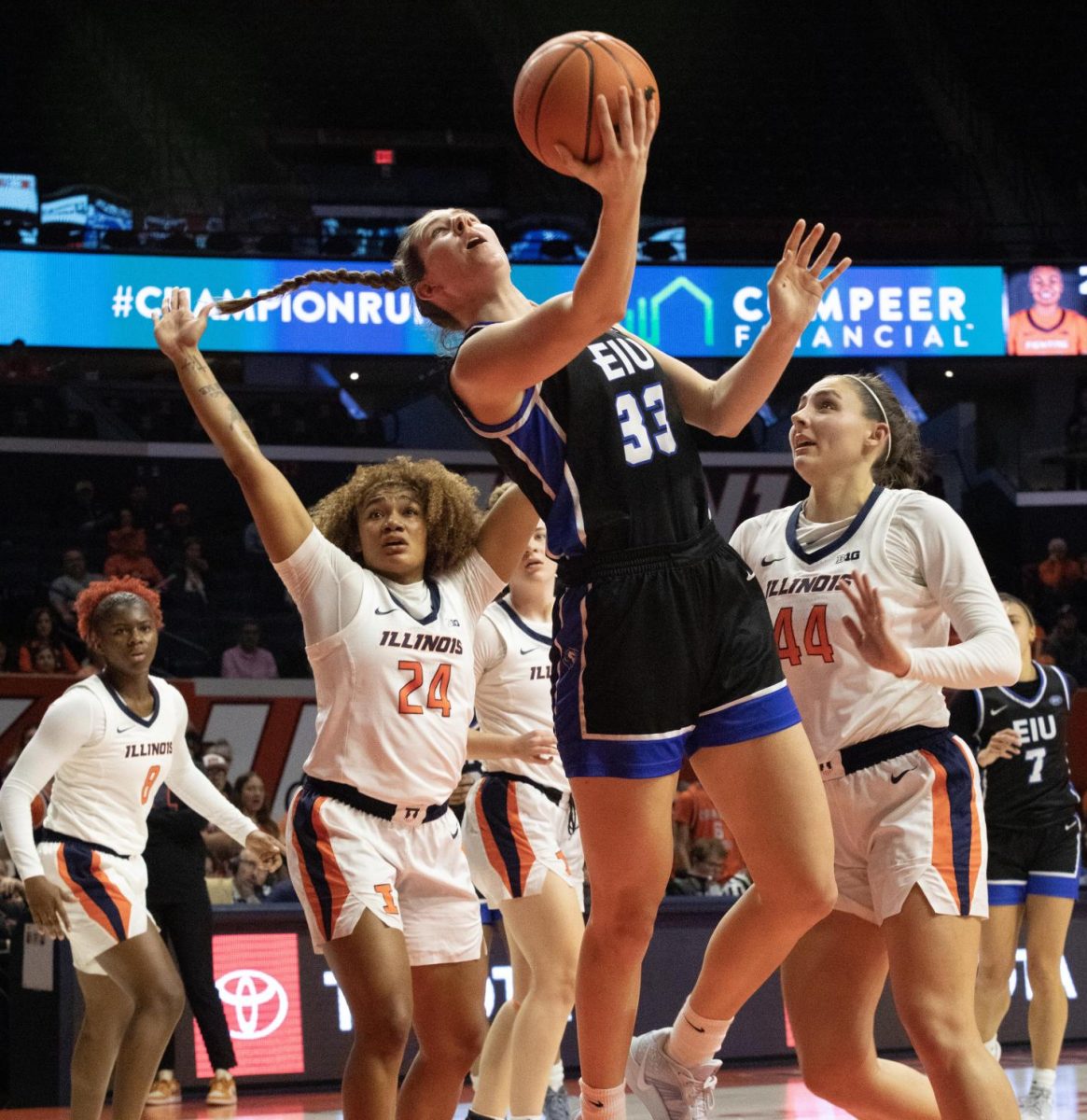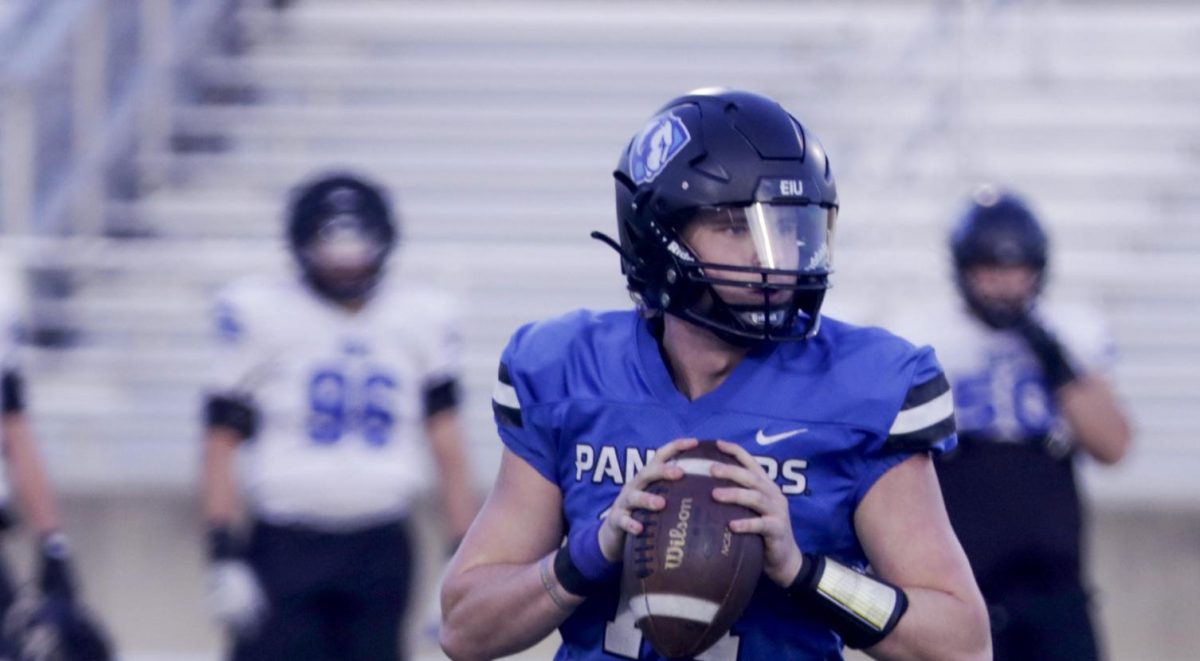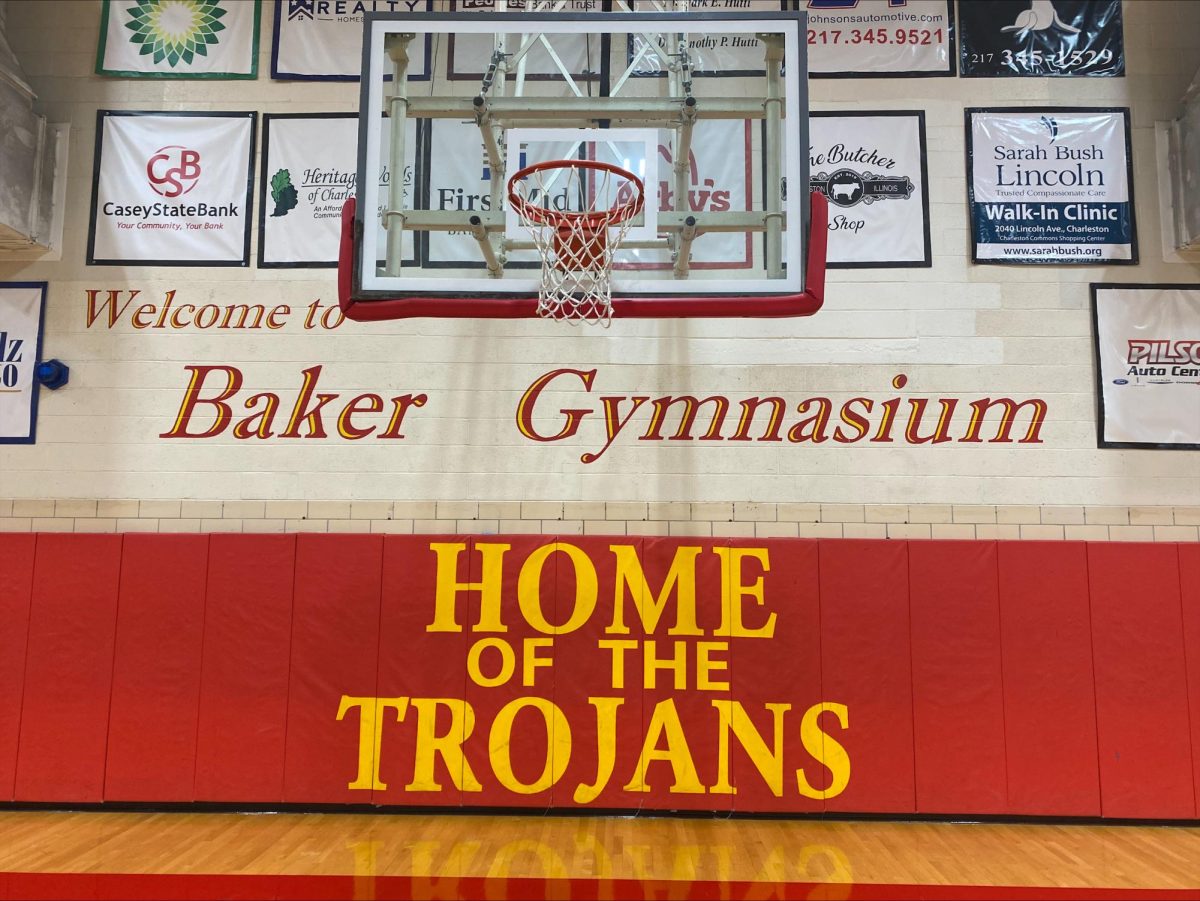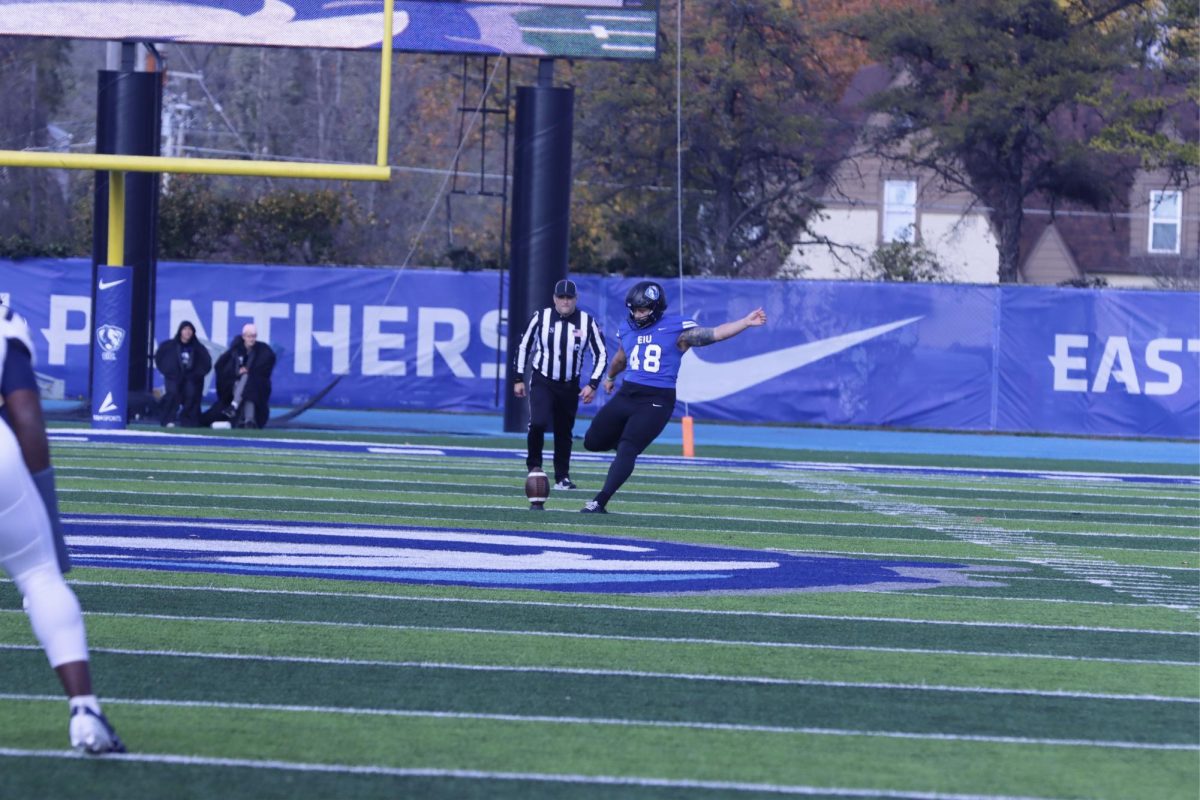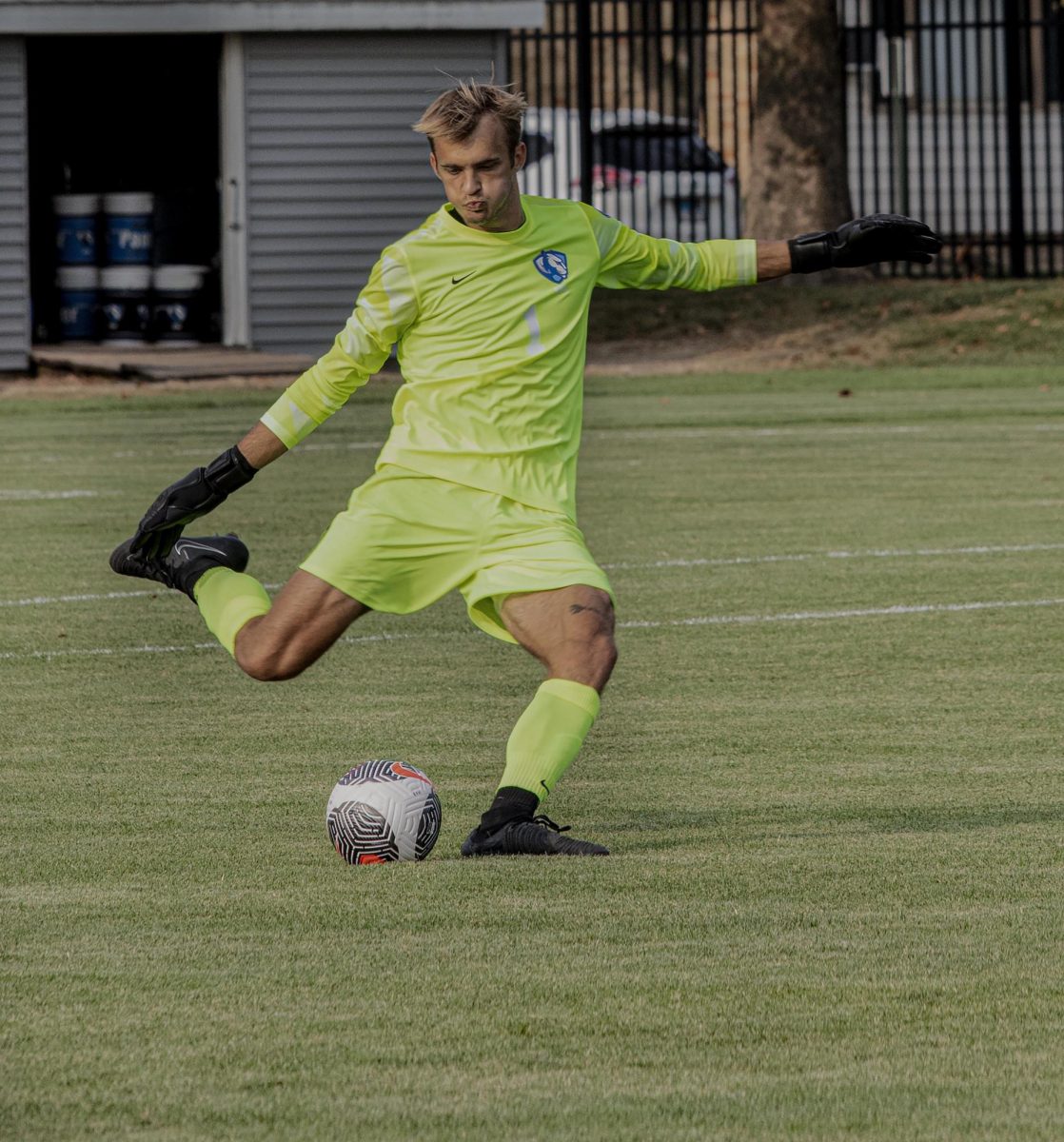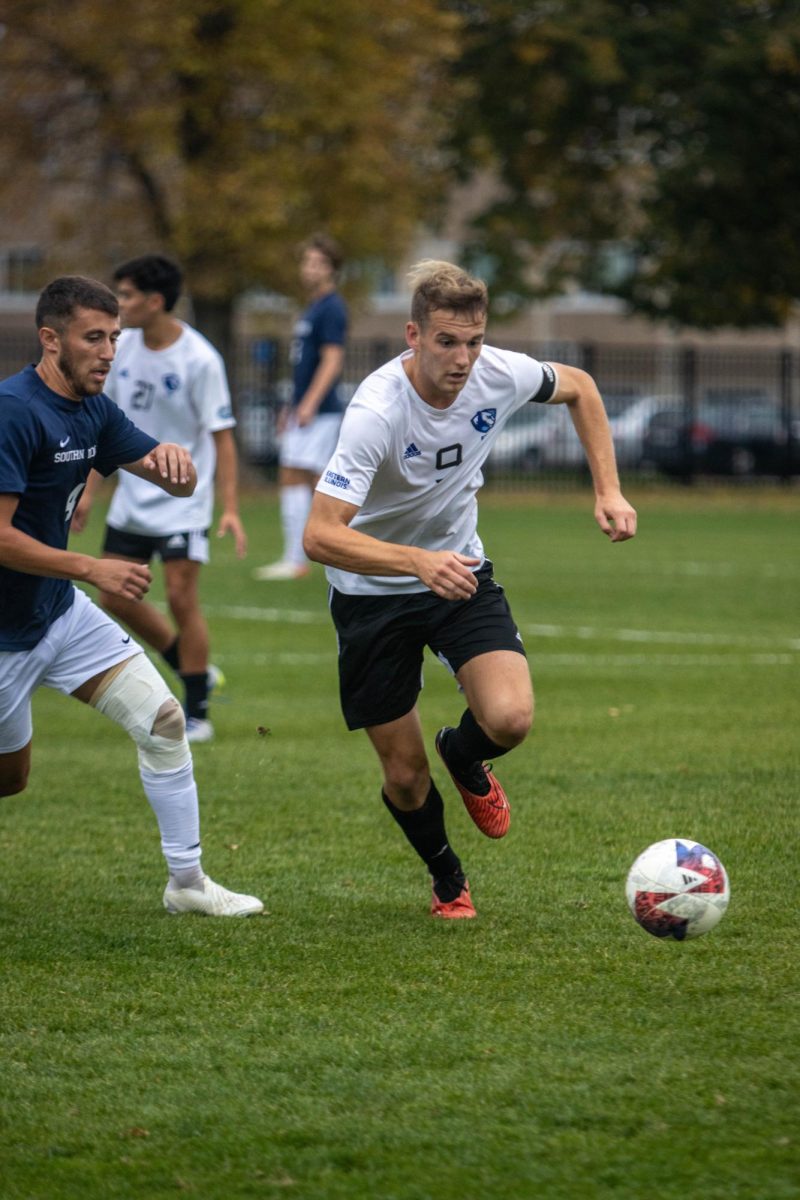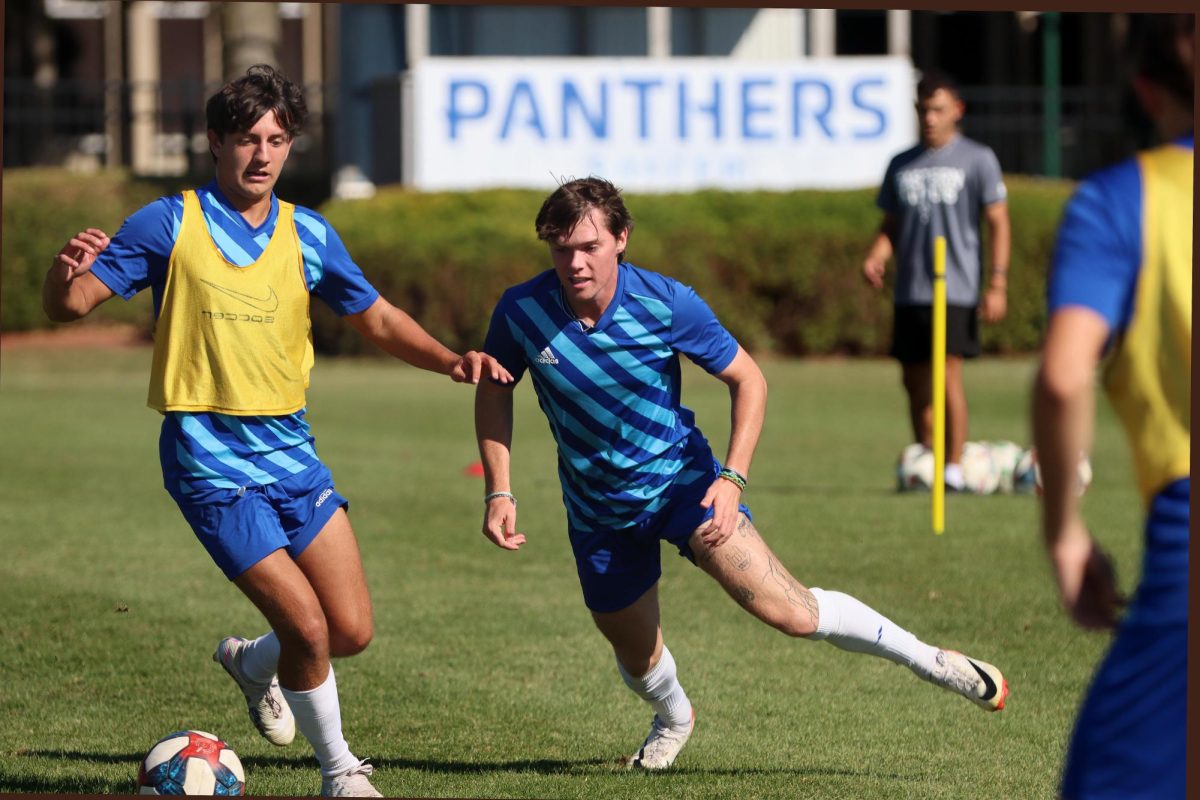Percussion students follow their passions
Becoming a percussionist is a lot like being grabbed by the violin strings and shaken until your body is being thrust to a beat it can resonate with.
At least this is how it happened to Kyle Dombroski, a senior psychology major and percussionist.
Dombrowski played the violin regularly – that is until his aunt gifted him a toy set of cardboard drums when he was a child. After that, the days of Vivaldi and Corelli were fond memories becoming increasingly muffled by tapping mallets and chattering hi-hats.
“There’s a lot I can learn,” Dombroski said. “I’m never going to stop learning, and I’m never going to perfect something, so I always have a goal.”
For Dombroski and his peers, these goals are inspired in the percussion lab of the Doudna Fine Arts Center, where music students gather and rehearse.
Meghan Osterbur, a sophomore biology major, said she still does not know how long it takes to learn to play percussion because the process is all-encompassing.
“The cool thing about percussion is that anything can be a percussion instrument,” she said.
Osterburg added that her position as female percussionist is an extra motivation for her to learn as much as she can.
“It seems like a very masculine instrument,” she said. “It isn’t discouraging; it’s actually kind of encouraging sometimes.”
Similarly, senior music education major Angela Napolitano knows the underestimated struggle of trying to perfect not just one, but and array of existing percussion instruments.
“They hear percussion and think, ‘Oh you play drums?’ and it’s so much more than that,” she said. “They think, ‘Oh you’re a rock star. You can play a drum set.”
Music is more than keeping a beat. On top of learning to sight-read sheet music and understanding the styles of different cultures, Napolitano said percussion students are required to learn and master a variety of instruments.
“If I played flute I would only practice flute and I would be really proficient in flute,” she said. “With percussion I have to be pretty proficient in a whole bunch of different instruments.”
Those instruments include: the vibraphone, timpani, bass drum, triangle, tambourine, claves, bongos, shakers and congo drums, to name a just a few.
For percussion students, the time not spent learning and perfecting music for class, is only a small window and filled with personal music endeavors.
Donovan Norman, a junior music education major, said percussion is a lifestyle for most as much has it is a hobby.
“It kind of consumes you,” he said. “Because it’s music, it’s not as overwhelming.
You’re practicing ways to express yourself. It’s a lot, but it’s worth it.”
Volume and speed are valid but misleading symbols of the self-expression that is inherent to percussion playing.
The real moments of individuality are in the cranking of a drummers neck – the heated concentration on every key on marimba.
When Napoltano plays, she feels.
“You get to use your body more than a lot of other instruments,” she said. “We get to express it with our face, when other instruments use their face.”
An eccentric stage presence and an eclectic taste in music are side effects of playing a versatile instrument.
Norman said one of his playlists may very well incorporate bands ranging from Bach to Boston to The Beatles.
“On marimba we play transcriptions of renaissance dances or string quartets, which transfer well to this instrument,” he said. “So I’ve been exposed to that through percussion.”
Although Dombroski blushed at admitting Linkin Park was the first band that encouraged him to play drums, he said now his taste has broadened.
“I listen to funk, jazz, rock and classical music, but the band I’ve been listening to lately is called Snarky Puppy,” he said. “They’re groovy.”
As for going to class, attendance is more pleasure than pain.
Norman said the professors in the department make his experience especially enjoyable.
“They are the most interesting and the coolest people on the face of the earth,” he said. “They’re down to earth and you can come to them for anything.”
Percussion students have a home away from home where there is a drum, a fellow musician and an instructor to advise them, Dombroski said.
“We have percussion ensemble three times a week and we have studio class,” he said. “We’re around each other all the time, so we become good friends and we become like a family.”
Although Dombroski’s life plans did not include a bow and violin, he said he will always remember that aspect of his musicality.
“I think the basics will always be with me,” he said. “Receiving this toy drum set from my aunt and watching all these rock drummers, it just appealed to me more.”
Katie Smith can be reached at 581-2812 or kesmith2@eiu.edu.





